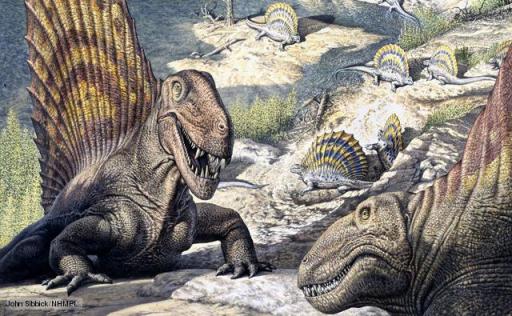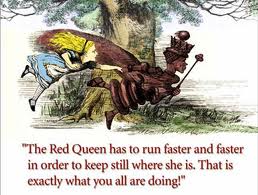DINOSAUR! But what does it mean..?
Palaeontology probably isn’t the most difficult of sciences, but it does incorporate aspects of chemistry, biology, and physics to a certain degree, as with many other geoscientific disciplines. Palaeontologists are also well known for the mysterious and unintelligible ‘science-speak’ that they use in research papers, fueled by this combination of a multitude of various sciences, the insane taxonomic system that we employ to identify fossils, and the standard anatomical descriptive phrasing too. I guess the aim of this series of posts, is just to break down some of the more complex terminology that you may come across online or in papers, and gain a bit more of an understanding of Palaeontology and related fields in the process. Yeah, it’s pretty much a glossary. With dinosaurs. Suggestions for words welcomed!
The way I wanna try this is just to use different Palaeo phrases, with each becoming an acronym for different Palaeo phrases! Hopefully this should make it easy to remember, and with that, hopefully some of the associated definitions will stick!

Dinosaur – This is actually tougher than you might think! Dinosaur explicitly refers to a member of the clade (a group consisting of an ancestor and all of its descendants) Dinosauria (including birds), but the definition of this clade is somewhat complex. They arose during the Triassic period about 230 odd million years ago, and still exist today as birds. They have a phylogenetic definition, as the group consisting of Triceratops, Neornithes (i.e., modern birds), their most recent common ancestor, and all their descendants.
Isometry – This is where you have growth of an organism with no shape change. It is not very common in the animal kingdom usually forming the null hypothesis to allometry, in which as an organism grows in size it also changes shape. Examples of linear transformations that accommodate isometry are translation and rotation.
Null hypothesis – Science progresses through the development and testing of hypotheses. Every rigorously tested hypothesis must have a sufficient null hypothesis to be tested and rejected before the primary hypothesis can be accepted. This usually consists of something regular or default, such as hypothesising that there is no relationship between two parameters.
Ontogeny – This is the process of individual growth from that most intimate of moments (some times) to a fully-developed adult. This can be on many levels, ranging from a complex being like us, to the development of an individual cell.
Synapsid – Vertebrate skulls have various holes, or fenestrae, perforating their skulls (e.g., the eye socket, or orbit). The number of these is quite important in an evolutionary and functional sense. Organisms known as synapsids had on origin in the Carboniferous and are alive still today as mammals. They are defined by the presence of a temporal fesnestra in the skull roof behind each eye.
Alpha biodiversity – There are three ‘ranks’ of biodiversity. The first, and smallest-scaled, is the mean species-level richness (abundance, density) within a given temporal or geographic domain, at a local scale. It is a within- or between-population metric, with a pre-defined spatial scale.
Uniformitarianism – One of the key concepts that underpins geology, and our understanding of the transition of geological time. It indicates that the present is the key to the past, in that the processes and patterns we can observe today also occurred back in time, and can help us unravel the complex tapestry of the co-evolution of life and the Earth.
Red Queen – A strong theory of evolution, whereby organisms are under constant pressure to adapt, evolve and reproduce in a system of where organisms and the environment are ever changing and evolving. It aims to explain extinction which we see in the fossil record through competition and natural change, and the advantages of sexual evolution on an individual scale.
And there you have it! Would be awesome if y’all could let me know if this actually helps in any way (and if the definitions are correct!) so that I can keep doing it in future if it’s of use.
This was originally posted at: http://blogs.egu.eu/palaeoblog/2013/01/29/353/

How about Archosaur? A: Archosaur, R: Rauisuchia, C: Crurotarsi; H: Homology, O: Ornithischia, S: Sympatric speciation, A: Allopatric speciation, U:Ulna, and R: Red King hypothesis. 😉
I taught English and have an MA in English. I love definitions and words.